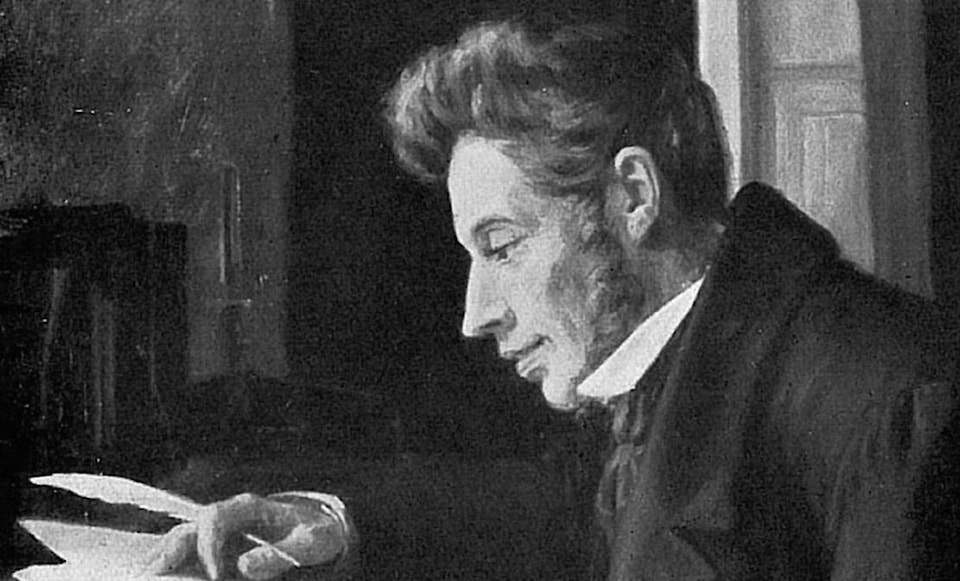Yme Woensdregt
One of the central elements of Christianity is something which we call faith. It is at the very heart of our experience as followers of Christ. But what does “faith” mean?
Most people these days, both inside and outside the church, would define “faith” as “believing a certain set of doctrines,” or “belief that is not based on proof,” or more specifically, “a strong belief in the existence of God.”
This understanding turns faith into a matter of the head. It’s all about what you believe, what you accept as being true. If you believe the right set of claims to be true, then you have faith. That’s a significant problem, because it mostly eliminates any sense of a relationship with the source of our faith.
But this propositional understanding, which has become the dominant understanding today, is only one of a number of different ways of thinking about faith. Indeed, it is not the primary understanding of faith within the Christian tradition. Marcus Borg, in his book, “The Heart of Christianity,” outlines at least three other ways of viewing faith.
An unfortunate and unintended consequence of this propositional understanding has led to a devaluing of faith in some quarters because faith seems to conflict with modern scientific learnings. People tend to talk about faith as being somehow opposed to science.
Before the 17th century Enlightenment, most people took the truths of the Bible for granted. Faith as assent was easy. There was no conflict between the Bible and science. But that’s no longer true today. One dictionary defines belief as “an opinion or conviction,” and then gives as an example “the belief that the earth is flat.” It goes on to say that belief is “confidence in the truth or existence of something not susceptible to rigorous proof.” People look at faith in this time as something you need when belief and knowledge conflict. Belief has come to mean believing a notion when it is contrary to evidence.
As a result, many conservative Christians won’t accept the science of evolution, or the science of climate change, or the science of vaccines. They resolve the supposed conflict between faith and science in favour of “what the Bible says.”
Other Christians think of faith differently and see no conflict between faith and science. We understand that knowledge can grow, and that it need not be in conflict with faith. Indeed, we understand faith quite differently.
A second way to understand faith is to see it as “trust.” Søren Kierkegaard, a 19th century Christian philosopher, used the image of faith as floating in 70,000 fathoms of water. If you struggle, if you tense up and thrash about, you will eventually sink. If you relax and trust, you will float.
In this more relational understanding of faith, faith means to trust God, our rock and our fortress, the one on whom we rely. To have faith in God means to be involved in a relationship of trust and love with God.
The opposite of this kind of faith is not doubt (as with the propositional understanding), but anxiety. In Matthew’s gospel, Jesus points to the birds flying freely in the air, and the flowers growing abundantly in the meadows. They do nothing but what they were created to be … and yet God cares for them abundantly and magnificently. “So don’t worry. Don’t be anxious. Trust God.” The good news of this understanding of faith is that it has the possibility of freeing us from much of our anxiety in the modern world.
A third way understands faith as “being faithful.” This is the language of relationship. We remain faithful in our relationship with God, not to a set of ideas. It is similar to being faithful in a committed human relationship. We remain loyal to another. We commit ourselves at a deep level. We make a commitment of our heart as well as our mind.
As in a marriage, when we are faithful in a relationship, we are attentive to it, we pay attention to it, we honour it. To be faithful to God means “to love God and to love what God loves,” in Marcus Borg’s wonderful phrase. This understanding includes an ethical imperative: Faith requires us to act in certain ways. It involves a commitment of our total being and is so much more than a head trip.
Fourthly, faith is a “way of seeing” and describing reality. Some see the universe as a threatening presence. Many others see it as indifferent. Still others see reality as life–giving and nourishing. Each of these three perspectives will lead to a different response to life. If we see life as nourishing, we will trust, we will be set free from anxiety, and we will give ourselves more freely and openly. This understanding of faith reminds us that how we see reality matters deeply.
These four different understandings of faith enrich our life with God. While there is an aspect of faith as assent, it strikes me that it is less open and less important than the more relational understandings of faith.
People of faith seek to live in a life–giving relationship with God. Faith is this kind of relational journey which holds us, encourages us, sets us free, and gives us a courageous hopefulness as we seek to live faithfully in the world. Faith is a living, growing, changing reality which helps us find our way through the changing contexts of our life. It is so much more than a static set of doctrines to which we give assent.
For Christians, this relationship helps us walk faithfully in the way of Jesus and learn to see the world from the perspective of God’s loving activity.
